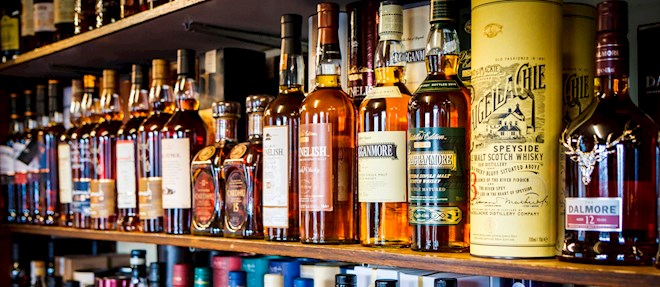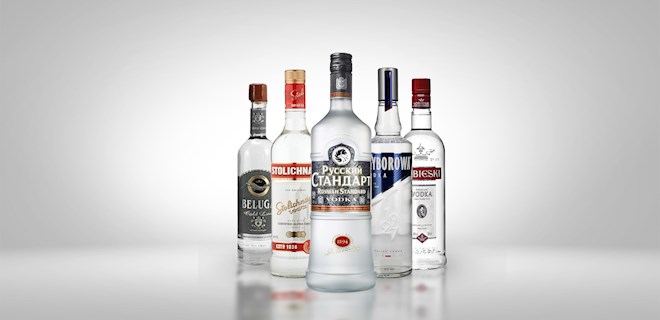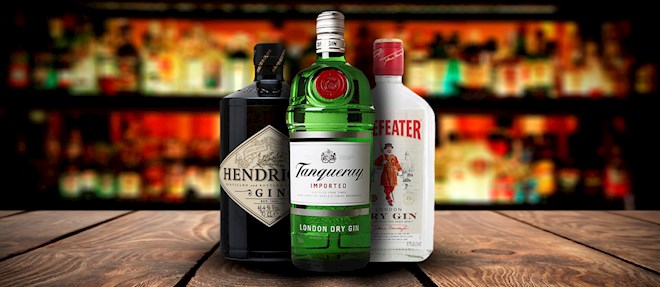European Spirits and Liqueurs
European Spirits and Liqueurs & producers

No results.
Try changing the search filters.
Scotch Whisky
Scotch is the renowned whisky variety hailing from Scotland. Although it can be made with the addition of other grains or cereals, the original Scottish whisky has to be made with a base of water and malted barley—barley that has be... READ MORE
Gin
Gin is a clear, light-bodied spirit that owes its taste profile to a variety of spices (primarily juniper) which are added to the basic grain. Most producers usually avoid distilling their base spirit and prefer to buy supplies of neutral... READ MORE
Cognac
This classic French brandy is distilled from grapes in order to produce eau-de-vie, which is then aged and blended to make cognac. The drink originated when it was revealed that eau-de-vie brandy of the Charente region develops d... READ MORE
Baileys
This acclaimed cream liqueur is produced with a combination of neutral alcohol, triple distilled Irish whiskey, and cream, which is supplied by small, local Irish family farms. The base of the liqueur is additionally enriched with vanilla, cocoa, ... READ MORE
Armagnac
Considered to be one of the first grape brandy varieties produced in France, Armagnac originated in Gascony, a historic area now divided between the regions of Nouvelle-Aquitaine and Occitanie. The first written records on Armagnac date b... READ MORE
Chartreuse
Chartreuse is one of the oldest and most popular French liqueurs. It is believed that the drink originates from an ancient manuscript that was sent to the Grande Chartreuse monastery at the beginning of the 18th century. In 1764, the Cart... READ MORE
Amaretto
This classic liqueur is made with different combinations of neutral spirits, caramel, sweet or bitter almonds, various herbs, spices, and occasionally apricot kernel oil. Though its name stems from the Italian amaro, meaning bitterREAD MORE
Absinthe
This alcoholic beverage is produced with a base of a neutral spirit that is infused with a blend of botanicals, primarily the leaves of Artemisia absinthium, an ancient medicinal plant that is also known as wormwood or simply absinthe. Ot... READ MORE
Campari
This vibrant red, dry Italian liqueur is produced with a neutral alcohol base that is infused with an extract of various bitters and aromatics such as pomegranate, ginseng, orange peel, the bark of cascarilla trees, and citrus oil. It was invented... READ MORE
Grappa
Italian grappa is distilled from fermented pomace—solid components of grapes that are left after the juice has been pressed. The taste profile of grappa varies, and each variety is distinguished for their unique character that depen... READ MORE
Irish Whiskey
Ireland was presumably the first country that introduced distillation, primarily to produce a clear distillate known as uisge beatha—which is generally considered to be a predecessor of modern-day whiskey. Only produced and matured ... READ MORE
London Dry gin
London Dry gin style is a quality designation for a specific gin variety in which all the flavors have to be natural and added through distillation. This gin is also distilled from a neutral base spirit that is enriched with various botan... READ MORE
Limoncello
This Italian liqueur is made with lemon zest that is left to infuse in a neutral spirit. The combination is mixed with sugar and water, and it is then filtered after a resting period. Although it is enjoyed and produced throughout Italy, limon... READ MORE
Cointreau
This classic triple sec was created by the Cointreau brothers, who managed to distill sweet and bitter orange peels to create a slightly sweet, fresh liqueur with incredibly concentrated flavor. The brand was first registered as triple sec in 1885... READ MORE
Grand Marnier
Created in 1880 by Louis Alexandre Marnier Lapostolle, Grand Marnier Cordon Rouge (lit. red ribbon) is a sophisticated blend of cognacs infused with the distilled essence of bitter oranges. In addition to Lapostolle's secret touc... READ MORE
Jägermeister
This popular German herbal liqueur was developed in 1934 by Curt Mast. He created the base of the drink with 56 different herbs, roots, and fruits that are macerated in a combination of alcohol and water. The procedure is repeated several times, a... READ MORE
Aperol
Hailing from Padua, this Italian liqueur was invented in 1919 by the Barbieri brothers. It has been produced following the original secret infusion that combines bitter and sweet oranges, rhubarb, herbs, and alcohol. It is characterized by its com... READ MORE
Ginjinha
Ginjinha (Ginja) is a traditional sour cherry liqueur that is mostly associated with Óbidos and Alcobaça, but the drink is enjoyed throughout the country, and it is also especially popular in Lisbon and Algarve. The creation... READ MORE
Ricard
This best-selling anise-based spirit was invented by Paul Ricard. He experimented with the distillation of fennel, anise and Provençal plants until he perfected the recipe in 1932, and started to market it as the real pastis of Marseill... READ MORE
Jenever
Considered to be a predecessor to gin, jenever is a Dutch spirit that was originally distilled from malt wine. Since the drink had a sharp and unusual flavor, it was often infused with various herbs, including juniper – whi... READ MORE
Triple Sec
Triple sec is a French term for clear, orange-flavored liqueurs. They are traditionally distilled from a macerate of dried orange peels and a neutral spirit. The origin of triple sec is undoubtedly French, though it is disputed who was th... READ MORE
Fernet
Though most brands keep their recipe secret, this Italian-style liqueur is typically made with a blend of various spices and herbs such as saffron, juniper, rhubarb, aloe, chamomile, and mint. Because of the extensive list of ingredients, Fern... READ MORE
Pastis
This French national drink is made with the potently sweet star anise—which gives pastis its unmistakable flavor—as well as herbs and spices such as sage, melissa, verbena, licorice, cinnamon, cardamom, and pepper. Its name st... READ MORE
Frangelico
This pale gold liqueur is distilled from a hazelnut infusion which is blended with various flavoring agents such as vanilla, chocolate, or coffee. The base concentrate is then combined with alcohol, sugar, and water before it is left to age. F... READ MORE
Disaronno
Hailing from Saronno, this renowned amaretto brand is produced with a base spirit, apricot kernel oil, burnt sugar, and 17 different herbs, fruits, and spices. The brand claimed the invention of the original amaretto in the 16th century, and throu... READ MORE
Becherovka
The original Becherovka was created by a British doctor Frobrig. He passed down the recipe to Josef Becher who perfected it and initially put it on the market as a medical remedy in 1807, under the name English Bitter. Despite th... READ MORE
Calvados
Calvados is a brandy distilled from apple cider or a combination of apples and pears. The fermented juice is usually double distilled to create the base of the ... READ MORE
Picon
Picon is a bittersweet orange-flavored French liqueur, officially classified as a bitter, which is commonly paired with beer. It was created in 1932 by Gaétan Picon, who was an apprentice at a distillery before he was stationed in ... READ MORE
Pimm's
This gin-based aperitif is officially classified as fruit cup—a beverage that is meant to be mixed into a long drink. It was invented in 1840 by a London oyster bar owner James Pimm who first offered it to his guests as a health ton... READ MORE
Kräuterlikör
The term kräuterlikör denotes different types of European herb liqueurs, predominantly German, which are also known as halbbitter (half bitters). They appeared soon after the introduction of distillation and were primar... READ MORE




